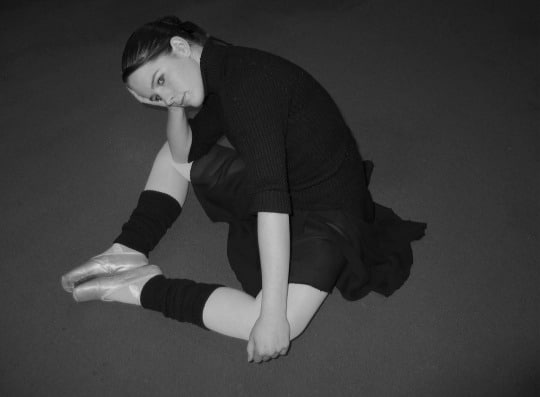Beginning something new can be challenging, and stepping into the world of dance is no exception—there’s so much to learn, and it can feel competitive. So what happens when your “competition” is two feet shorter than you and three years ahead? If you started ballet classes late in life, you’re all too familiar with this predicament.
Most dancers begin their careers at tots, twirling streamers in pre-ballet and learning to touch their toes. From there, they graduate into their first beginner ballet class, where they’ll learn the basics, their minds soaking in French terms that will soon be second nature. They’ll mature into dancers whose young muscles and tendons are naturally flexible, allowing them to bend further, extend their leg higher and perform movements with ease.This is the world in which an older dancer will find herself, as she steps into ballet class for the first time.
It takes drive and determination to start dancing as an older child or teen, but more than that…it takes guts!
So how do you survive this awkward beginning stage without allowing the emotional and physical obstacles of being a “late bloomer” in the dance world affect you? Here are some things older dancers need to keep in mind:
Stop Comparing Yourself
This can be difficult, especially when you’re standing in a sea of petite nine year old’s, feeling self-conscious about the fact that you’re in a leotard and tights with every flaw and insecurity on display. But keep in mind, these are young girls who have been doing this since they could walk. It’s not fair to beat yourself up over the fact that someone younger than you might know more. Lack of knowledge does not equal lack of talent. You might not have all the steps down yet, but feeling behind is temporary, and the only person you need to compete with is yourself!
Set Realistic Goals…Don’t Sacrifice Technique
You’re starting out, so allow yourself the time to learn—it’s okay to push, but don’t push too far. Avoid forcing your body into moving in a way that it’s just not trained to move yet. Over time, it will adjust to the things you’re asking it to do. For example, if your arabesque is at 45 degrees, and you physically can’t get it higher, don’t worry, work on your placement so that when you are strong enough, you’ll be able to do the movement correctly. Sacrificing your technique to kick your leg higher is one of the worst things you can do.
Practice Makes Perfect
If you want to get better, you have to be dedicated. It’s ok to take class for fun, but if your intention is to improve and raise your level of expertise, you need to dedicate the time to doing that. Several classes per week are a must.
Identify Your Strengths and Weaknesses
This might be something that your teacher can help you with. If you’re struggling with flexibility or balance, ask your teacher to show you some stretches or exercise that you can do at home and before class in order to improve on those weaknesses…they’ll become strengths in no time! And while we’re on the subject of strengths, you need to identify those too. Recognize when you’ve improved on something, even if it’s small, and celebrate the achievement!
Ballet is tough, and being the oldest dancer in the classroom is even tougher, but stick it out, remember why you started in the first place. So much of ballet is stage presence and upper body, cultivate your artistry, stay focused, and know that you will improve!

